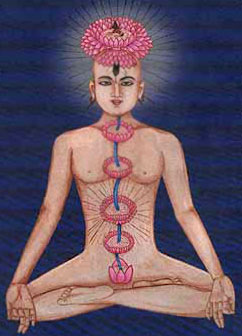 Works on Buddhist Tantra is not easy to typify. Though there has been some categorization of Tantric scriptures. There was a division of texts as Kriya (Action), Carya (Performance) or Yoga (Union), which is sequential. Kriya Tantras are earlier than the Carya and the Carya precede the Yoga. From the time of the Yoga Tantras there is a consciousness of the classification tradition and a development and expansion of categories. This division is further expanded by the addition of the Anuttarayoga or Maha Yoga Tantras and their secondary - divisions into father and mother Tantras.
Works on Buddhist Tantra is not easy to typify. Though there has been some categorization of Tantric scriptures. There was a division of texts as Kriya (Action), Carya (Performance) or Yoga (Union), which is sequential. Kriya Tantras are earlier than the Carya and the Carya precede the Yoga. From the time of the Yoga Tantras there is a consciousness of the classification tradition and a development and expansion of categories. This division is further expanded by the addition of the Anuttarayoga or Maha Yoga Tantras and their secondary - divisions into father and mother Tantras.
 The largest class of Tantras is the Kriya which has around 450 known Tantras assigned to it. The earliest texts dates back to the 2nd century and they continue to appear till the 6th century. These texts were designed to achieve a variety of worldly goals like easing of illness, weather control, generation of health and prosperity, placation of deities and safety from danger. The word Tantra frequently appeared in texts during the period of Yoga and Maha yoga Tantras.
The largest class of Tantras is the Kriya which has around 450 known Tantras assigned to it. The earliest texts dates back to the 2nd century and they continue to appear till the 6th century. These texts were designed to achieve a variety of worldly goals like easing of illness, weather control, generation of health and prosperity, placation of deities and safety from danger. The word Tantra frequently appeared in texts during the period of Yoga and Maha yoga Tantras.
Carya is the smallest of the categories as very less texts are assigned to it. Maha Vairocana Sutra is one of the important Tantras. The role played by Buddha Vairocana where he is depicted in the centre of a symmetrical Mandala is one of the important features of Carya. The development of the idea of the practitioner developing meditative identification with the deity was developed during this age. The goals were worldly which a further step was towards to quicken the process of becoming a Buddha.
Important works of the Yoga Tantras include the Tattvasamgraha Sutra, the Vajrasekhara Tantra and the well known Namasamgiti. Vairocana`s figure at the center of Mandalas continues with the Yoga Tantras. During this period Tantric Buddhism begins to promote itself as a powerful means to gain Buddha hood.
MahaYoga Tantras appear by the end of the eighth century which evolved closely out of the Yoga Tantras. They continue the five-Buddha and five-family system of the Yoga Tantras. The use of sexual imagery and the consumption of forbidden and impure substances are the other notable features of the MahaYoga Tantras. The other feature of the Mother Tantras is that more than one tantra can be associated with the principal deity of the Mandala. Mother Tantras comprise of a number of different "cycles". The title of these Tantras are derived from the distinctive roles played by female figures in them with the central deities surrounded by dancing female figures called Yoginis whose appearance mirrors that of the central figure.




















